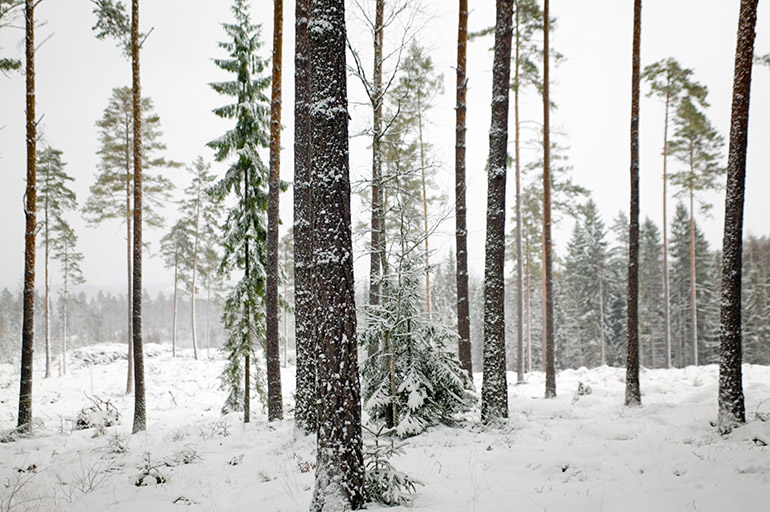
Research has shown that the more rigorous forests are thinned, the more resilient they can be under the impact of climate change.
Turns out ‘thinning’ saves water and can combat climate change
New research suggests a backyard gardener’s tried and true method of ‘thinning’ could benefit tree growth and water supply, and ultimately help fight climate change.
UBC Okanagan Professor Adam Wei says thinning—the selective harvesting of a young crop to make space for growth—could improve the overall growing conditions of lodgepole pine stands in the BC Interior. Lodgepole pine trees are prolific and often crowd each other which can affect tree growth.
The more rigorous forests are thinned, the more resilient they can be under the impact of climate change.
“Our study presented the short-term benefits of the juvenile thinning in terms of increasing tree-level radial growth, sap flow and reducing stand-level water absorption and evaporation,” says Wei. “While heavier thinning can mean more rigorous trees, it can also produce more ecological benefits, such as resistance to the effect of drought.”
Wei, who teaches forest hydrology in UBCO’s earth, environmental and geographic sciences department, says the world needs more healthy forests and thinning of some species of trees is a good way to improve the overall growing conditions of the individual trees in overcrowded forests.
Wei’s research team, consisting of scientists from the BC Ministry of Forests, Lands, Natural Resource Operations and Rural Development, the University of Waterloo and universities in Spain and China, conducted a multi-year study over three blocks of trees in the upper Penticton experimental watershed.
After selective trees were harvested, the individual forest blocks were monitored closely over a two-year period. The researchers tracked tree diameter, sap flows, moisture retention and at the same time kept track of the weather conditions including wind, precipitation, temperature, sunshine and relative humidity.
“Our results generally agree with other studies showing that thinning can greatly increase tree-level radial growth while at the same time, decreasing stand-level transpiration due to the decrease in stand density,” says Wei.
The researchers had three study plots—one heavily harvested, the other lightly harvested and one left alone. While the trees benefit from having more space and daylight, the study also states juvenile thinning could mitigate the effects of drought, as fewer trees need rainwater and moisture from the ground.
“Our two-year results demonstrate that the more heavily thinned treatment reducing the number of trees per hectare from 27,000 to 1,100 had the more pronounced effect on tree growth, sap flow velocity and stand-level transpiration,” says Yi Wang, who conducted this research as part of her graduate studies. “Significant improvements in radial growth and tree transpiration in the heavily thinned stand corresponded with improved quality of daylight and soil water availability than the other two stands.”
Wei also notes the more heavily thinned stands did maintain the highest tree growth and the best moisture absorption even during a drought year. He suggests the information from this study will be useful in future years, especially when it comes to planning management strategies for forests impacted by climate change.
But he also notes, previous studies have determined that thinning trees may not guarantee a healthy forest.
“However, other forestry research has shown that tree species, the age at which forests are thinned, and the number of trees left after thinning all have a substantial effect on the health of the future forest and wood products, says Wei. “So forest management decisions on thinning must be made within a much broader context and take into consideration timber supply, forest health, carbon stocks, water conservation, wildfire risks and wildlife habitat.”
“More studies on long-term effects of thinning are still needed to support development of sustainable management for both water and wood,” says Rita Winkler, researcher with the BC Ministry of Forests, Lands, Natural Resource Operations and Rural Development. “As well as for carbon sequestration and the many other ecological functions of lodgepole pine forests, particularly in the context of climate change.”
The study, partially funded by a collaborative research grant from the Natural Sciences and Engineering Research Council of Canada, was recently published in Forest Ecology and Management.